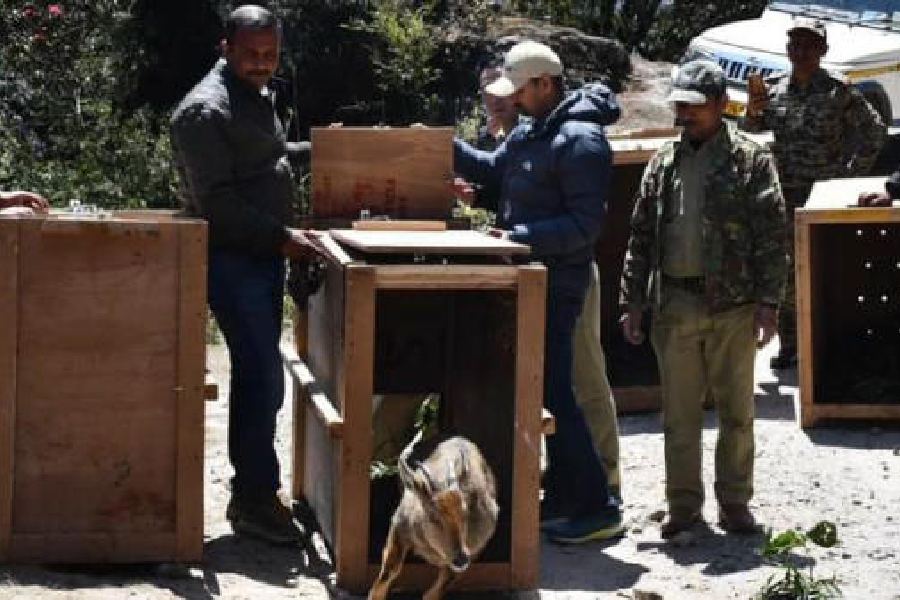The state forest department and authorities of the Padmaja Naidu Himalayan Zoological Park (PNHZP) in Darjeeling have taken up the augmentation programme of the Himalayan goral at the Singalila National Park in Darjeeling district.
The gorals, mammals with horns and a goat-like appearance, are found on hilly terrain. They are also an endangered herbivore species.
On Saturday, as a part of the plan, they released four gorals — two males and females each bred in captivity at the PNHZP — for the first time into the national park.
Debal Roy, the principal chief conservator of forest and the chief wildlife warden of the state, and other senior officials were present during the release.
“We have released two pairs of gorals into the Singalila National Park under our augmentation programme on Saturday. The initiative has been taken for the first time,” said Basavaraj S. Holeyachi, the director of the PNHZP.
According to the foresters, Himalayan gorals are found in the Himalayan region of Sikkim and Arunachal Pradesh in India and also in Southeast Asian countries like Nepal, Bhutan, Pakistan, Myanmar and Tibet. The species, they said, can be found even at a height of 9,000 feet from the sea level.
However, because of its meat, its population has severely plunged over the years. Now, the goral is listed as an endangered species by the IUCN (International Union for Conservation of Nature) in its red data book on the vulnerability of animal species.
“As of now, we have 33 gorals in the zoo (the PNHZP). In due course, there is a plan to release some more gorals into the wild,” said a forester.
Established in 1958, the PNHZP has earned recognition globally for its captive breeding and conservation programmes of species like the Himalayan red panda, snow leopard, Tibetan wolf, salamander and other endangered species only found in the Himalayan region.
The park also earned recognition as the best of its kind across the country from the Central Zoo Authority in 2022 from among the 130-odd zoos.










